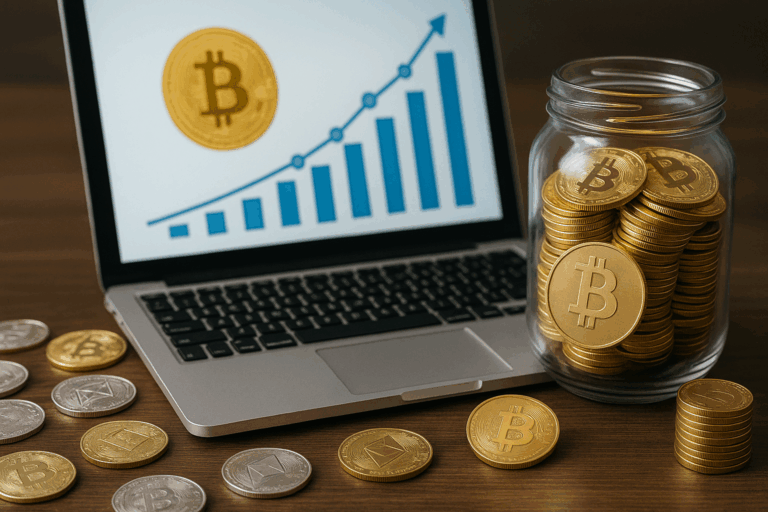Over the next decade, the global economy is expected to evolve toward full-scale tokenization, a shift where assets, currencies, and financial systems exist in programmable digital form on blockchain networks.
In this emerging environment, Bitcoin remains central to the conversation. As the oldest and most established digital asset, its influence extends beyond price speculation or investment. Even throughout BTC price fluctuations, its sustained presence shapes how institutions and individuals define digital value.
Bitcoin’s legacy as the first decentralized digital currency has positioned it as a key benchmark in the transition to tokenized finance. As new networks develop and more assets move onto blockchain-based systems, the question is how it will adapt and integrate into a fully tokenized global economy by 2030.
Understanding the Tokenized Economy
Tokenization represents the process of converting physical or traditional assets (such as real estate, stocks, bonds, or intellectual property) into digital tokens that can be stored, traded, and verified on blockchain systems. These tokens allow for fractional ownership, immediate settlement, and transparent value tracking. The concept already transforms financial markets by improving efficiency and accessibility while reducing intermediaries.
Governments, corporations, and financial institutions are investing in tokenization technology to streamline complex transactions, from cross-border payments to supply chain management. Tokenized economies will likely redefine how ownership and value are recorded and transferred, creating a seamless connection between traditional finance and digital systems.
In this context, Bitcoin stands apart. It is not a tokenized version of another asset but an entirely native digital one. Its independence from central control and global recognition give it a distinct position as both a foundational technology and a reserve asset in the tokenized economy of the future.
Bitcoin’s Evolution Beyond a Store of Value
Bitcoin’s identity has evolved considerably since its introduction in 2009. Initially viewed as an experimental currency, it has become a widely recognized value and digital collateral store. However, as blockchain innovation accelerates, Bitcoin’s functionality continues to expand. By 2030, it could be more dynamic within tokenized financial systems.
Technological developments such as the Lightning Network and sidechains are improving Bitcoin’s transaction speed and scalability, allowing it to support microtransactions and decentralized applications. These enhancements increase its utility beyond a long-term investment asset. Developers are also exploring interoperability solutions that could allow Bitcoin to interact directly with tokenized assets and decentralized finance (DeFi) platforms.
Bitcoin could serve as a trusted settlement layer or digital reserve within tokenized markets in this future ecosystem. Its secure network, predictable supply, and global liquidity make it an ideal foundation for digital financial operations that require transparency and reliability.
Institutional Integration and Regulatory Clarity
A key driver of Bitcoin’s integration into the tokenized economy will be continued institutional adoption supported by regulatory clarity. Over the past several years, banks, investment firms, and corporations have established digital asset custody, lending, and settlement frameworks. This infrastructure lays the groundwork for Bitcoin’s role in a system where tokenized assets move freely across global markets.
By 2030, greater regulatory consistency will likely allow Bitcoin to coexist with tokenized fiat currencies, stablecoins, and central bank digital currencies (CBDCs). Financial institutions can manage portfolios that include traditional securities and digital assets on unified platforms.
Bitcoin as Digital Infrastructure in a Tokenized World
In a tokenized economy, Bitcoin’s network could function as digital infrastructure. Its decentralized ledger, maintained by thousands of nodes worldwide, offers security and transparency that few other systems can match. This makes it well-suited as a verification layer or collateral foundation for tokenized assets.
One potential application lies in decentralized settlement. Tokenized assets could use Bitcoin’s blockchain to validate and secure high-value transactions, reducing reliance on centralized clearinghouses. Another is programmable finance, where Bitcoin-based contracts could enable automated payments or collateral management across different platforms.
Challenges and Competitive Dynamics
While Bitcoin’s potential is significant, it will face competition and technical challenges in the tokenized economy. Alternative blockchains are developing faster transaction speeds, lower fees, and greater flexibility for token issuance. Central bank digital currencies and corporate-backed stablecoins will compete for dominance in digital payments and financial settlement.
Environmental concerns remain another point of discussion. Bitcoin’s proof-of-work system consumes considerable energy, prompting debates about sustainability.. Continued progress in energy-conscious innovation will be essential to maintaining Bitcoin’s credibility as part of a future sustainable financial network.
Bitcoin at the Core of a Digital Future
Bitcoin’s place in the tokenized economy of 2030 will be defined by its adaptability and continued relevance. It has evolved from a peer-to-peer currency into a critical digital asset with institutional legitimacy. In a world where nearly every asset can be tokenized, Bitcoin offers a foundation that is secure, transparent, and universally accessible.





